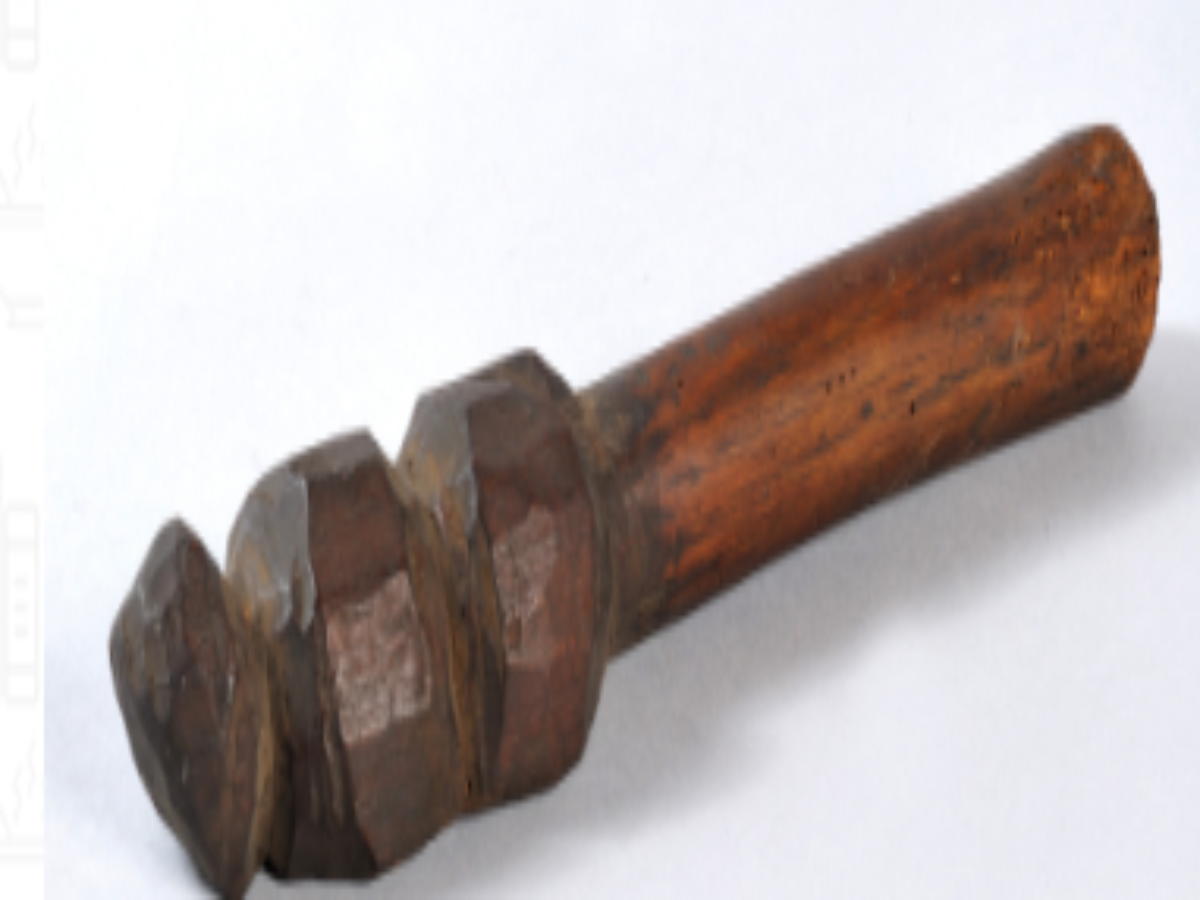State
Tribe Name
Art Type
short description
The wooden hammer handle from the Angami Naga tribe of Nagaland bears testimony to the traditional craftsmanship and utilitarian innovation of the people in question. The tool handle is made from hard-wearing local hardwood and is intended to carry the stone hammerhead-an implement whose use in daily tasks can scarcely be overstated, inclusive of construction and craftwork, and agricultural work. Three circular notches are featured at one end of the handle, which have been finely etched to ensure a snug fit for the stone hammerhead. Once the stone has been fitted, cane straps would be wound tightly around these grooves to secure the head in place for safety functions during use.
Thumbnail

Filter Postion
Left
Filter Background
Off
Theme
Filter Header Image

content
Image

description
The wooden hammer handle from the Angami Naga tribe of Nagaland bears testimony to the traditional craftsmanship and utilitarian innovation of the people in question. The tool handle is made from hard-wearing local hardwood and is intended to carry the stone hammerhead-an implement whose use in daily tasks can scarcely be overstated, inclusive of construction and craftwork, and agricultural work. Three circular notches are featured at one end of the handle, which have been finely etched to ensure a snug fit for the stone hammerhead. Once the stone has been fitted, cane straps would be wound tightly around these grooves to secure the head in place for safety functions during use.
The binding technique documents the innate knowledge of the community towards natural materials and their mechanical properties. Such tools are valued not merely as functional objects but are also a testament to the self-sufficient quality of life of the Angami tribe. They manifest an ingenious application of available resources to fulfil their immediate needs, thus demonstrating a sustainable mode of existence very much in touch with the land. Now housed in the Indian Museum, Calcutta, this hammer handle stands as a cultural artifact preserving the tangible heritage of the Angami tribe. For researchers, museum visitors, and enthusiasts of traditional indigenous tools and practices, it provides an important teaching and ethnographic resource.
The binding technique documents the innate knowledge of the community towards natural materials and their mechanical properties. Such tools are valued not merely as functional objects but are also a testament to the self-sufficient quality of life of the Angami tribe. They manifest an ingenious application of available resources to fulfil their immediate needs, thus demonstrating a sustainable mode of existence very much in touch with the land. Now housed in the Indian Museum, Calcutta, this hammer handle stands as a cultural artifact preserving the tangible heritage of the Angami tribe. For researchers, museum visitors, and enthusiasts of traditional indigenous tools and practices, it provides an important teaching and ethnographic resource.
Image Mode
landscape
promoted
On
Verified
Off
